A Comprehensive Guide to LTC6754ISC6#PBF LVDS Comparator
Surface Mount Strip Linear Comparators 2015
This article provides an in-depth analysis of the LTC6754ISC6#PBF LVDS comparator by Linear Technology/Analog Devices. It covers the product description, features, applications, reference designs, alternative parts, and frequently asked questions (FAQs) related to this versatile component.
Product Introduction
Description:
The LTC6754ISC6#PBF is a general-purpose comparator with a single LVDS output. It operates over a wide supply voltage range of 2.4V to 5.25V and is suitable for various precision signal detection and processing applications. With a compact 6-VSSOP package and low quiescent current, this comparator offers high performance in a small footprint.
Features:
- Single LVDS output for high-speed signal processing
- Wide operating supply voltage range for flexibility in different applications
- Low quiescent current of 14.7mA for power efficiency
- High-speed operation with a propagation delay of 2.8ns
- Excellent CMRR and PSRR for accurate signal detection
Applications:
Primary Applications:
1. Precision signal detection in communication systems
2. High-speed data acquisition systems
3. Industrial automation and control systems
4. Instrumentation and measurement equipment
Secondary Applications:
1. Automotive electronics
2. Medical devices
3. Consumer electronics
4. Power management systems
Applicable Specific Modules:
1. LVDS signal processing modules
2. Signal conditioning circuits
3. Data transmission systems
Reference Designs:
1. LVDS signal receiver circuit for high-speed data communication
2. Precision voltage monitoring system using LVDS output
3. High-speed signal processing module for industrial automation
Alternative Parts:
1. LTC6753: Similar LVDS comparator with different pin configurations
2. LTC6755: Higher speed LVDS comparator for ultra-fast applications
3. LTC6756: Lower power consumption LVDS comparator for battery-operated devices
FAQs:
Q1: What is the maximum input offset voltage of the LTC6754ISC6#PBF?
A1: The maximum input offset voltage is 4mV at a 5V supply.
Q2: Can the LTC6754ISC6#PBF operate on a single supply voltage?
A2: Yes, the LTC6754ISC6#PBF can operate on a single supply voltage ranging from 2.4V to 5.25V.
Q3: What is the typical current output of the LTC6754ISC6#PBF?
A3: The typical current output is 11mA, suitable for driving external loads.
In conclusion, the LTC6754ISC6#PBF LVDS comparator offers high-speed performance, low power consumption, and precise signal detection capabilities, making it an ideal choice for a wide range of applications in various industries. Its compact package and versatile features make it a popular choice among electronic engineers for designing cutting-edge systems.
Specifications
- TypeParameter
- Mounting Type
The "Mounting Type" in electronic components refers to the method used to attach or connect a component to a circuit board or other substrate, such as through-hole, surface-mount, or panel mount.
Surface Mount - Package / Case
refers to the protective housing that encases an electronic component, providing mechanical support, electrical connections, and thermal management.
6-VSSOP, SC-88, SOT-363 - Number of Elements1
- Operating Temperature
The operating temperature is the range of ambient temperature within which a power supply, or any other electrical equipment, operate in. This ranges from a minimum operating temperature, to a peak or maximum operating temperature, outside which, the power supply may fail.
-40°C~85°C - Packaging
Semiconductor package is a carrier / shell used to contain and cover one or more semiconductor components or integrated circuits. The material of the shell can be metal, plastic, glass or ceramic.
Strip - Published2015
- Part Status
Parts can have many statuses as they progress through the configuration, analysis, review, and approval stages.
Discontinued - Moisture Sensitivity Level (MSL)
Moisture Sensitivity Level (MSL) is a standardized rating that indicates the susceptibility of electronic components, particularly semiconductors, to moisture-induced damage during storage and the soldering process, defining the allowable exposure time to ambient conditions before they require special handling or baking to prevent failures
1 (Unlimited) - TypeGeneral Purpose
- Base Part Number
The "Base Part Number" (BPN) in electronic components serves a similar purpose to the "Base Product Number." It refers to the primary identifier for a component that captures the essential characteristics shared by a group of similar components. The BPN provides a fundamental way to reference a family or series of components without specifying all the variations and specific details.
LTC6754 - Pin Count
a count of all of the component leads (or pins)
6 - Output Type
The "Output Type" parameter in electronic components refers to the type of signal or data that is produced by the component as an output. This parameter specifies the nature of the output signal, such as analog or digital, and can also include details about the voltage levels, current levels, frequency, and other characteristics of the output signal. Understanding the output type of a component is crucial for ensuring compatibility with other components in a circuit or system, as well as for determining how the output signal can be utilized or processed further. In summary, the output type parameter provides essential information about the nature of the signal that is generated by the electronic component as its output.
LVDS - Voltage - Supply, Single/Dual (±)
The parameter "Voltage - Supply, Single/Dual (±)" in electronic components refers to the power supply voltage required for the proper operation of the component. This parameter indicates whether the component requires a single power supply voltage (e.g., 5V) or a dual power supply voltage (e.g., ±15V). For components that require a single power supply voltage, only one voltage level is needed for operation. On the other hand, components that require a dual power supply voltage need both positive and negative voltage levels to function correctly.Understanding the voltage supply requirements of electronic components is crucial for designing and integrating them into circuits to ensure proper functionality and prevent damage due to incorrect voltage levels.
2.4V~5.25V - Current - Quiescent (Max)
The parameter "Current - Quiescent (Max)" in electronic components refers to the maximum amount of current that a device consumes when it is in a quiescent or idle state. This parameter is important because it indicates the minimum power consumption of the device when it is not actively performing any tasks. It is typically measured in units of amperes (A) and helps in determining the overall power efficiency and battery life of the electronic component. Designers and engineers use this parameter to ensure that the device meets power consumption requirements and operates within specified limits during standby or idle modes.
14.7mA - Voltage - Input Offset (Max)
Voltage - Input Offset (Max) is a parameter that refers to the maximum allowable difference in input voltage between two input terminals of an electronic component, such as an operational amplifier, before the output voltage deviates from the expected value. This parameter is crucial in precision applications where accurate voltage amplification or signal processing is required. A higher value for the input offset voltage indicates a greater potential for error in the output signal, so minimizing this parameter is important for maintaining the accuracy and reliability of the component's performance. Designers often take this parameter into consideration when selecting components for circuits that require precise voltage control and signal processing.
4mV @ 5V - Current - Input Bias (Max)
The parameter "Current - Input Bias (Max)" in electronic components refers to the maximum amount of input bias current that can flow into the input terminal of the component without causing any adverse effects on its performance. Input bias current is the small amount of current that flows into the input terminal of an electronic component, such as an operational amplifier, transistor, or integrated circuit, even when no input signal is applied. This parameter is important because excessive input bias current can lead to errors in the output signal and affect the overall performance of the component. Manufacturers specify a maximum value for input bias current to ensure proper operation and reliability of the component in various applications. It is crucial for designers and engineers to consider this parameter when selecting components for their circuits to ensure optimal performance and functionality.
1.5μA - Hysteresis
Hysteresis in electronic components refers to the phenomenon where the output of a system depends not only on its current input but also on its past inputs. In other words, the system's response to a particular input may differ depending on whether the input is increasing or decreasing. This behavior is often seen in devices such as sensors, amplifiers, and control systems. Hysteresis can be intentional, designed to provide stability or prevent rapid switching, or it can be unwanted and lead to inaccuracies in the system's performance. Understanding and managing hysteresis is important in ensuring the reliability and accuracy of electronic components and systems.
4.5mV - CMRR, PSRR (Typ)
CMRR stands for Common-Mode Rejection Ratio, which measures the ability of an amplifier to reject common-mode signals, or noise that appears simultaneously on both inputs. It is defined as the ratio of differential gain to common-mode gain, typically expressed in decibels. PSRR, or Power Supply Rejection Ratio, indicates how well an electronic component can reject fluctuations in its power supply voltage, showing the relationship between changes in supply voltage and the output voltage variation. Both parameters are critical for assessing the performance and stability of amplifiers and other electronic circuits in real-world applications.
77dB CMRR, 80dB PSRR - Current - Output (Typ)
The parameter "Current - Output (Typ)" in electronic components refers to the typical output current that the component is designed to deliver under normal operating conditions. It represents the expected or average value of the output current that the component can provide. This parameter is important for determining the capability of the component to supply power to other parts of the circuit or system. It helps in ensuring that the component can meet the current requirements of the application without exceeding its specified limits. Manufacturers provide this parameter in datasheets to help designers select the appropriate component for their specific needs.
11mA - Propagation Delay (Max)
Propagation Delay (Max) is the maximum time it takes for a signal to travel through an electronic component, such as a logic gate or a flip-flop, from the input to the output. It is a critical specification in digital circuits since it determines how quickly the circuit can respond to input changes. High propagation delays can limit the operating speed of a circuit, affecting overall performance and timing. Understanding this parameter is essential for designing high-speed electronic systems.
2.8ns - RoHS Status
RoHS means “Restriction of Certain Hazardous Substances” in the “Hazardous Substances Directive” in electrical and electronic equipment.
ROHS3 Compliant
Parts with Similar Specs
Datasheet PDF
- Datasheets :
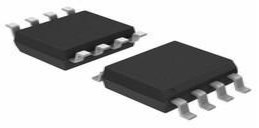 MIC2548 Programmable Current-Limit High-Side Switch: Pinout, Equivalent and Datasheet
MIC2548 Programmable Current-Limit High-Side Switch: Pinout, Equivalent and Datasheet04 March 2022382
 THS7314 Video Amplifiers:Pinout, Datasheet and Application
THS7314 Video Amplifiers:Pinout, Datasheet and Application25 June 20212246
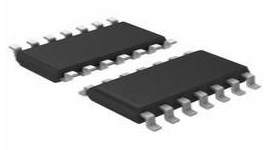 ATTINY24A 8-bit AVR® Microcontroller: Pinout, Features and Datasheet
ATTINY24A 8-bit AVR® Microcontroller: Pinout, Features and Datasheet08 January 20222999
 74LS04: Circuits, Applications, and Pinout
74LS04: Circuits, Applications, and Pinout31 March 20223662
 A Comprehensive Guide to LTC6811HG-2#3ZZTRPBF Battery Management PMIC
A Comprehensive Guide to LTC6811HG-2#3ZZTRPBF Battery Management PMIC06 March 2024190
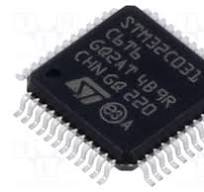 STM32C031C6T6 Datasheet Guide: Complete Beginner's Tutoria
STM32C031C6T6 Datasheet Guide: Complete Beginner's Tutoria03 July 2025119
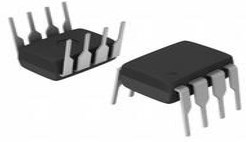 AD620 Instrumentation Amplifier: Pinout, Schematic and Price
AD620 Instrumentation Amplifier: Pinout, Schematic and Price30 July 20216486
 PCA9306DCTR Translator: Features, Applications and Datasheet
PCA9306DCTR Translator: Features, Applications and Datasheet26 December 2023293
 8051 Microcontroller: History, Architecture, Applications, and Features
8051 Microcontroller: History, Architecture, Applications, and Features20 February 202117865
 Yahoo Discontinues Services in Mainland China
Yahoo Discontinues Services in Mainland China13 November 2023799
 Rotary Switches Brand Comparison for Engineers and Buyers
Rotary Switches Brand Comparison for Engineers and Buyers11 July 20251234
 What is a Monostable Multivibrator?
What is a Monostable Multivibrator?16 January 20215664
 How does Lidar Work?
How does Lidar Work?20 April 20218436
 Discovering Optimal Materials for Wide Bandgap Semiconductors
Discovering Optimal Materials for Wide Bandgap Semiconductors20 January 20242020
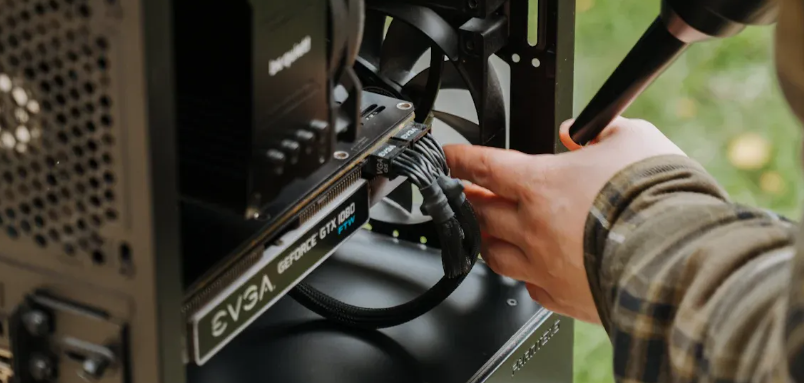 How Proper Thermal Management Extends the Life of Your Electronics
How Proper Thermal Management Extends the Life of Your Electronics18 July 2025476
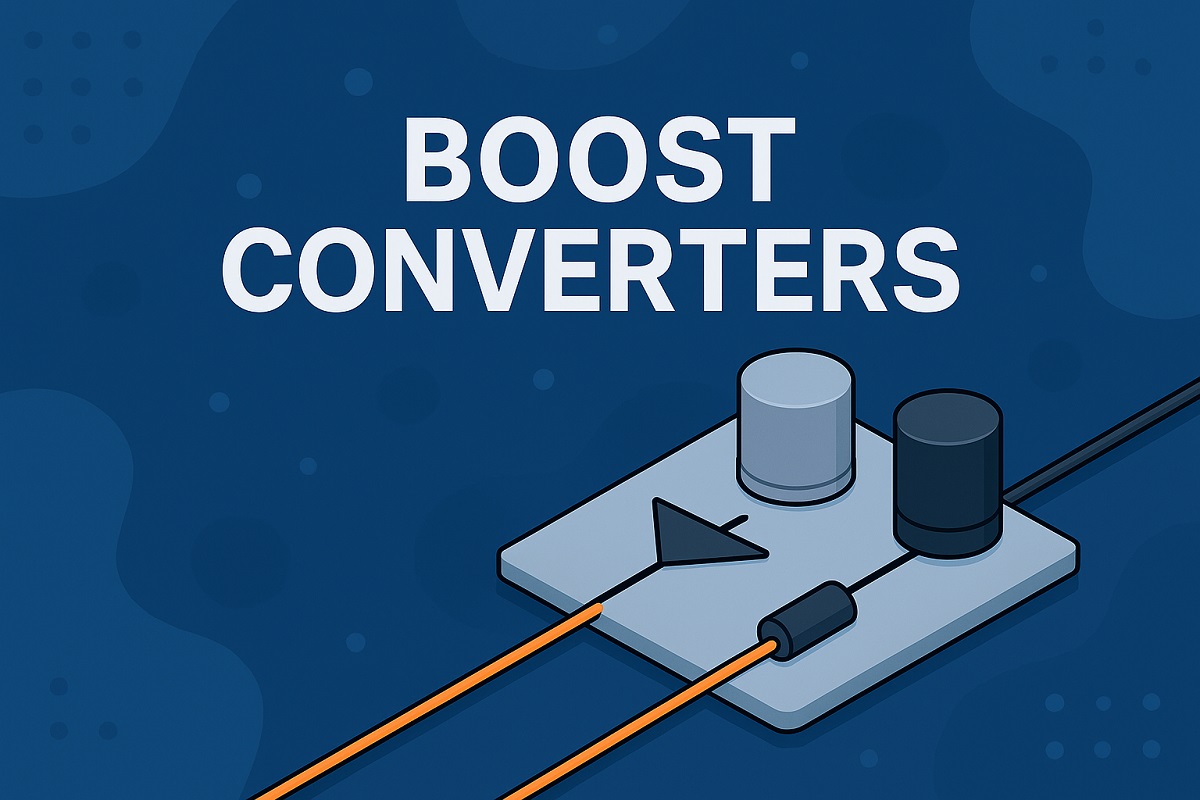 How to Pick the Perfect Boost Converter for Your Needs
How to Pick the Perfect Boost Converter for Your Needs07 June 2025638
Linear Technology/Analog Devices
In Stock
United States
China
Canada
Japan
Russia
Germany
United Kingdom
Singapore
Italy
Hong Kong(China)
Taiwan(China)
France
Korea
Mexico
Netherlands
Malaysia
Austria
Spain
Switzerland
Poland
Thailand
Vietnam
India
United Arab Emirates
Afghanistan
Åland Islands
Albania
Algeria
American Samoa
Andorra
Angola
Anguilla
Antigua & Barbuda
Argentina
Armenia
Aruba
Australia
Azerbaijan
Bahamas
Bahrain
Bangladesh
Barbados
Belarus
Belgium
Belize
Benin
Bermuda
Bhutan
Bolivia
Bonaire, Sint Eustatius and Saba
Bosnia & Herzegovina
Botswana
Brazil
British Indian Ocean Territory
British Virgin Islands
Brunei
Bulgaria
Burkina Faso
Burundi
Cabo Verde
Cambodia
Cameroon
Cayman Islands
Central African Republic
Chad
Chile
Christmas Island
Cocos (Keeling) Islands
Colombia
Comoros
Congo
Congo (DRC)
Cook Islands
Costa Rica
Côte d’Ivoire
Croatia
Cuba
Curaçao
Cyprus
Czechia
Denmark
Djibouti
Dominica
Dominican Republic
Ecuador
Egypt
El Salvador
Equatorial Guinea
Eritrea
Estonia
Eswatini
Ethiopia
Falkland Islands
Faroe Islands
Fiji
Finland
French Guiana
French Polynesia
Gabon
Gambia
Georgia
Ghana
Gibraltar
Greece
Greenland
Grenada
Guadeloupe
Guam
Guatemala
Guernsey
Guinea
Guinea-Bissau
Guyana
Haiti
Honduras
Hungary
Iceland
Indonesia
Iran
Iraq
Ireland
Isle of Man
Israel
Jamaica
Jersey
Jordan
Kazakhstan
Kenya
Kiribati
Kosovo
Kuwait
Kyrgyzstan
Laos
Latvia
Lebanon
Lesotho
Liberia
Libya
Liechtenstein
Lithuania
Luxembourg
Macao(China)
Madagascar
Malawi
Maldives
Mali
Malta
Marshall Islands
Martinique
Mauritania
Mauritius
Mayotte
Micronesia
Moldova
Monaco
Mongolia
Montenegro
Montserrat
Morocco
Mozambique
Myanmar
Namibia
Nauru
Nepal
New Caledonia
New Zealand
Nicaragua
Niger
Nigeria
Niue
Norfolk Island
North Korea
North Macedonia
Northern Mariana Islands
Norway
Oman
Pakistan
Palau
Palestinian Authority
Panama
Papua New Guinea
Paraguay
Peru
Philippines
Pitcairn Islands
Portugal
Puerto Rico
Qatar
Réunion
Romania
Rwanda
Samoa
San Marino
São Tomé & Príncipe
Saudi Arabia
Senegal
Serbia
Seychelles
Sierra Leone
Sint Maarten
Slovakia
Slovenia
Solomon Islands
Somalia
South Africa
South Sudan
Sri Lanka
St Helena, Ascension, Tristan da Cunha
St. Barthélemy
St. Kitts & Nevis
St. Lucia
St. Martin
St. Pierre & Miquelon
St. Vincent & Grenadines
Sudan
Suriname
Svalbard & Jan Mayen
Sweden
Syria
Tajikistan
Tanzania
Timor-Leste
Togo
Tokelau
Tonga
Trinidad & Tobago
Tunisia
Turkey
Turkmenistan
Turks & Caicos Islands
Tuvalu
U.S. Outlying Islands
U.S. Virgin Islands
Uganda
Ukraine
Uruguay
Uzbekistan
Vanuatu
Vatican City
Venezuela
Wallis & Futuna
Yemen
Zambia
Zimbabwe



















